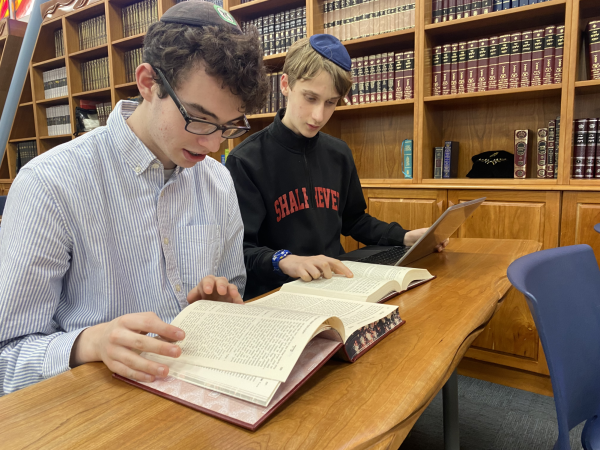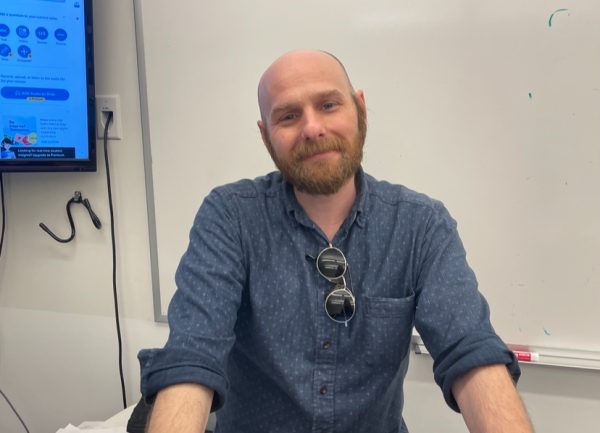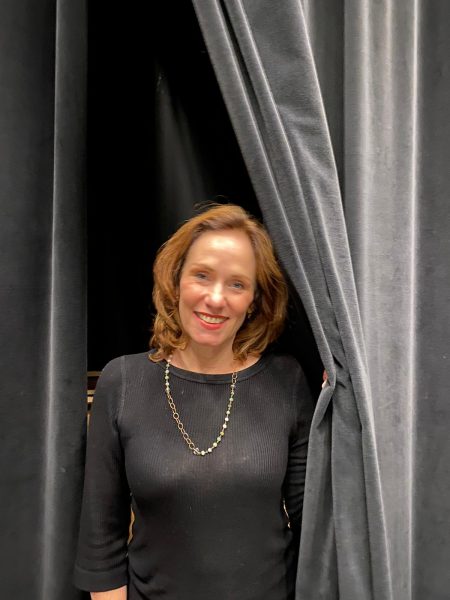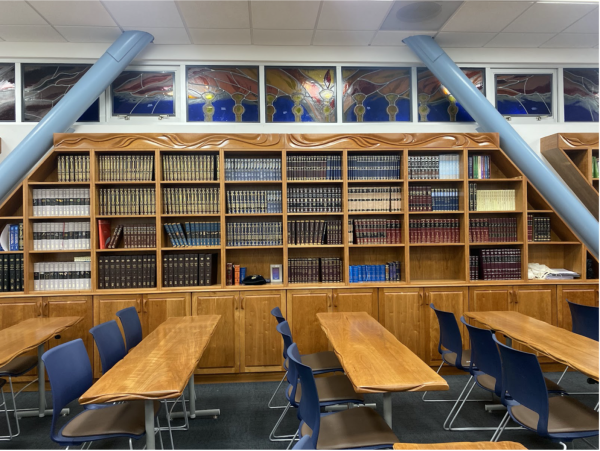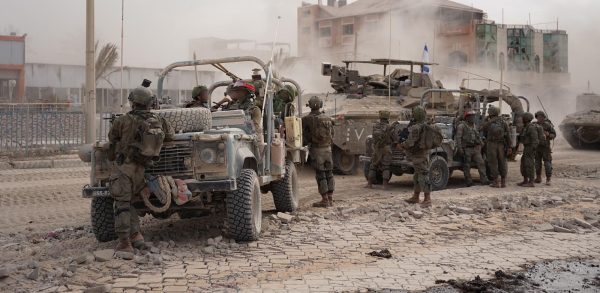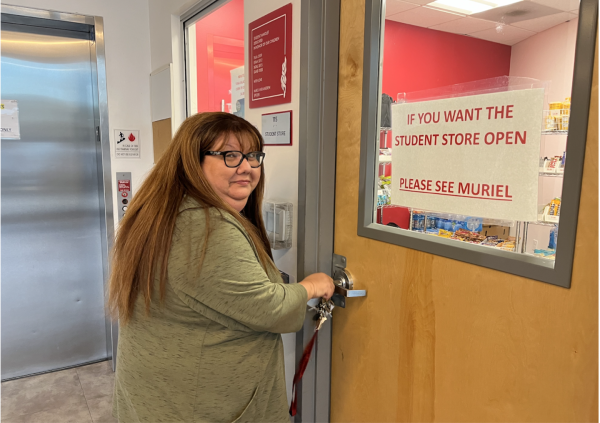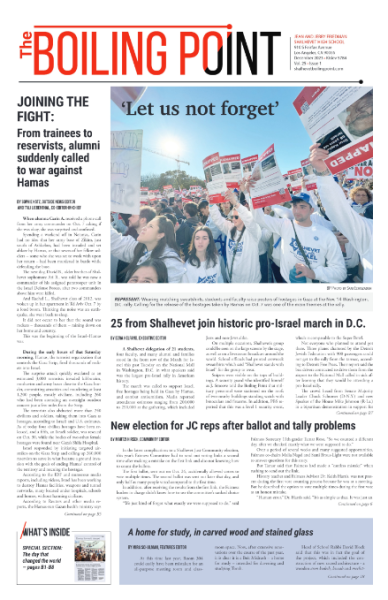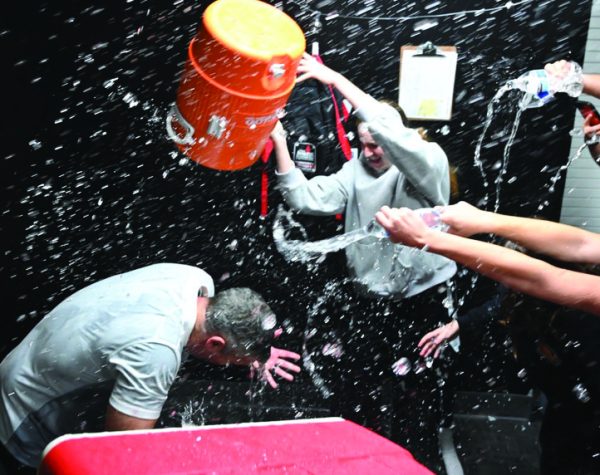For juniors, two days of focus on driving distracted
March 17, 2015
By Eric Bazak, Outside News Editor
It started with a loud “boom” and then the cry of girls screaming for help. Screens were lifted to show two wrecked cars and two girls squirming on the street. A couple of the teenagers inside of the cars were slumped over lifelessly. There was a pack of Bud Light sitting on the roof of one of the vehicles.
This was the scene that the junior class viewed at Beverly Hills High School on Feb. 26. Sitting in bleachers with juniors from Beverly, they were watching a simulation of what can happen when drivers drink, text or are otherwise distracted.
Later in the program, speakers took a step out of the simulation, and described real events that had affected people they knew. It happens, apparently, every 15 minutes – giving the two-day program its name, Every 15 Minutes.
“The enactment was very overwhelming in itself because of all the commotion with the ambulances and the screaming,” said Shalhevet junior Shirel Benji. “But what really hit me hard was when the speakers who were affected by actual accidents spoke to us. It put everything in perspective for me.”
Funded by the Beverly Hills Police Department, Every 15 Minutes aims to warn students about the potential repercussions of driving while under the influence of alcohol and distracted driving. Through connections with Beverly families, Shalhevet had managed to be invited to the every-other-year presentation, which also involves the Beverly Hills Fire Department and Cedars-Sinai Medical Center.
The event started when Shalhevet’s juniors arrived by bus and sat among Beverly students in the bleachers outside the school. At first, large screens blocked their view of the street in front of them. Then suddenly, loud speakers broadcast the sound of a crash and the screens were quickly moved to show a detailed staging of a fatal car accident.
In the simulation, two girls crossing the street were hit by an intoxicated driver, which led to that car crashing into another driver, who had also been distracted by texting on his phone.
Police officers, firemen, and paramedics stormed to the scene and rescued the surviving teens stuck inside the two damaged cars. One of the teenagers, “Mason,” had died on impact and officers placed a white body sheet on top of him. Another student, “P.J.,” was placed on a stretcher and taken to a hospital, where he was said to have died later.
Ten minutes further into the simulation, the police officers directed their attention to a sobbing teenager – the driver — sitting on the sidewalk. They asked if he had had anything to drink, but he could not remember. He agreed to take a series of tests.
First he had to follow an officer’s flashlight moving only his eyes. Then he had to walk on a straight line while counting. Finally, he had to balance himself on one leg. After he clearly failed all of those tests, the officer handcuffed and arrested him, which concluded the first stage of the program.
“This scene was very realistic,” said Beverly Hills Fire Department Captain Joe Matsch. “We don’t always have an incident where there are 12 affected including pedestrians though. Most of the time you are going to have three or four people at most. But the damage you see on the car, the screaming, the pain, and the agony, that is all very realistic.”
Captain Matsch said he hoped that the day’s discomfort would change student behavior and save lives.
“I’ve been here for 20 years and seen multiple incidents of people dying on the scene and people dying after they get to the hospital, and it’s needless,” Captain Masch said in an interview.
“This program is a great opportunity to let students see what the effects of poor decision-making are. Simply texting or drinking and driving or anything where you are not being attentive on the road have grave ramifications, and this is a perfect example of what we’ve displayed to students.”
The juniors returned to Beverly Hills the next day after lunch. This time, they entered a large auditorium, and directed their attention to a stage with a coffin in the center. A mock funeral began when a man playing “Amazing Grace” on bagpipes led black-dressed, rose-carrying mourners to the stage.
Then, the lights dimmed and a large screen projected a video that the Beverly students and city of Beverly Hills had filmed before, during, and after the pretend collision that occurred the previous day. The audience learned about the party that, in the scenario, the driver and his friends had attended the night before the crash. The driver had been assigned as designated driver for the night, but his friends had peer-pressured him to have a few drinks anyway.
After depicting the party, the video skips to when all of the teenagers wake up a few hours later, still intoxicated. The friends continue to pressure the driver and insist that he is completely fit to drive.
“Just put two hands on the wheel, your foot on the pedal, and go,” Mason, one of the teenagers who later die, tells him.
As he begins to drive, the film switches to another driver who is texting. He turns his attention away from the wheel for one moment and it becomes too late for him to register the other car crashing into the front of his car, with two girls lodged in between.
The video then switches to glimpses of the crash scene the day before, followed by a trial — where the driver is charged with manslaughter and murder. Several testimonies are heard from the victims’ families, who all blame the driver for what happened.
The driver is sentenced to 36 years to life in prison for the deaths, plus an additional 6 years for ruining another teenager’s dream of becoming a professional volleyball player. The video concludes with him in a prison cell. The enactment concluded with eulogies.
When it was over, Beverly Hills police officer Brad Cornelius showed a short Powerpoint from the perspective of having spent 16 of his 35 years as a police officer enforcing traffic. He said he has seen several fatal accidents which were a result of distracted driving.
“I know you’ve seen a lot of acting, but this is all real,” Officer Cornelius told the audience. “I have met the real Grim Reaper on the street many times. The Grim Reaper doesn’t care — if you don’t do what you’re supposed to do, he is right around the corner waiting for you.”
He then showed a slide of a damaged car which a texting teen had smashed, causing. Emily, the 18-year-old girl inside that car, to become physically and cognitively damaged. He then showed the audience a video of Emily, who talked about how her life had been changed.
Officer Cornelius later told the assembly that Emily is his daughter, and suddenly greeted her on the stage to say a few words. On crutches, Emily limped onto the stage to deliver her short message.
“You don’t want to regret doing this to another person or yourself, and to prevent anyone from living their dreams,” Emily said.
With that, the program was finished but the juniors were not. The vast majority of the grade attended an Oneg Friday night at the home of Head of School Rabbi Ari Segal, which wound up being an open discussion about binge drinking and making better decisions.
“I do believe that the program as well as the Shabbat Oneg will leave a lasting impression on the junior class,” said School Counselor Rachel Hecht. “I am so proud of the level of maturity and warmth exhibited by all on Friday night. I pray that the experience as a whole leads the students to stop and think before they make potentially dangerous decisions.”
Shalhevet’s connection to the program was Lisa Schwartz, a member of the Every 15 Minutes’ Executive Board since its formation in 2008. She attended Beverly Hills High with Janice Kaufler, mother of senior Adam Kaufler, and took Ms. Hecht and Adam to see the program at Beverly two years ago.
“I know for a fact that our message has not only sunk into our students, but has also changed their thinking and actions,” said Mrs. Schwartz in an interview. .
She said students she doesn’t know but who recognize her from the program walk up to her and tell her they are more likely to take Ubers or taxis, and that it is easier for them to resist peer pressure.
“They say they never realized that being distracted as a driver could be so dangerous, and they never realized that driving with someone who is could be as harmful and or devastating,” Mrs. Schwartz said.
“Texting while driving can be as deadly as drinking and driving or using drugs and driving,” she said. “Being a passenger in a car when the driver has been involved with alcohol or drugs can be as bad.”
She said Every 15 Minutes is now focusing on distracted driving in general, and that though the program’s name will stay the same, a death caused by a distracted driver in the United States now takes place every two or three minutes.
Shalhevet junior Jacob Dauer believes that the event helped him become a safer driver in general, and he hopes it will lead to Shalhevet students making safer decisions in the future.
“The event taught me to always be cautious at the wheel and always be cognizant of what’s going on around me,” Jacob said. “I think that the event along with the discussion we had on Friday night made a major impact on our grade for the better.
That was exactly what the event’s planners had in mind.
“This is going to save lives,” said Captain Matsch of the Beverly Hills Fire Department, “and it’s going to leave a lasting impression on students, and hopefully they will make better decisions, because lives are at risk.”


